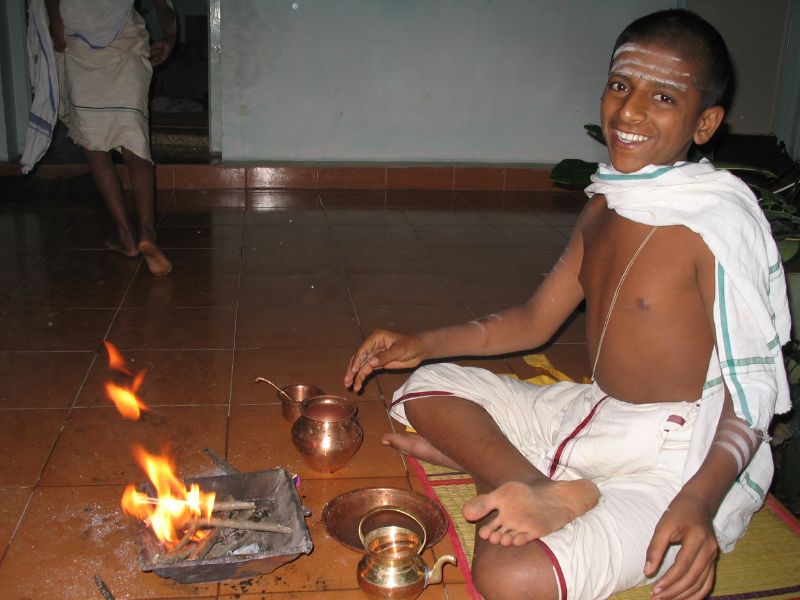 |
| A Brahmin giving orders to a Shudra |
Varna refers to the categorization of the Hindu society by four castes, hypothesized by the Brahmins and their sacred texts. The four varnas, or chatur varna, are mentioned in ancient texts in the following (stratified) order, from top to bottom,
- the Brahmins: vedic priests.
- the Kshatriya: kings, governors and professional soldiers.
- Vaishyas: bankers and merchants.
- the Shudras: cattle keepers, agriculturists, labourers, artisans and service providers.
The first three varna are considered Arya, and thus allowed to participate in Vedic rituals from which the Shudra varna is excluded, although it was the largest segment of the population.
Separate and shunned by the society, including by the Shudras, were the "untouchables" such as the Dalit and the Chandaal (cāṇḍāla), who had to deal with the disposal of dead bodies and are described as dirty and polluted. There was a belief that one's Karma in the past, resulted in one's condition in this birth. "Now people here whose conduct is good can expect to quickly attain a pleasant birth, like that of a Brahmin, the Kshatriya, or the Vaisya. But people of evil conduct can expect to enter a foul womb, like that of a dog, a pig, or a Chandaal".




No comments:
Post a Comment